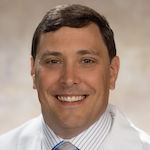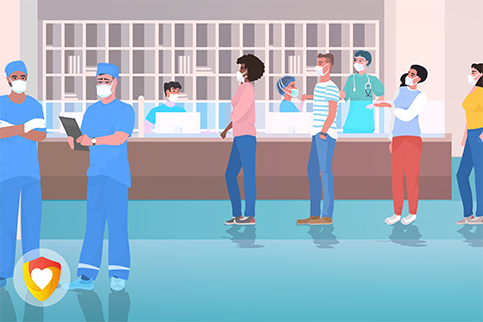In April, California Gov. Gavin Newsom’s office asked our physician group, Vituity, to provide medical relief to New York City Health and Hospitals, which had been overwhelmed by the pandemic. In addition to providing clinical support, we were charged with helping to develop policy and planning recommendations that would prepare California for future COVID-19 surges.
This deployment was prescient, as the country now faces surges in regions across the United States. The Vituity delegation to New York City included more than 50 clinicians who worked in emergency departments (EDs), intensive care units (ICUs), psychiatric hospitals, isolation hotels, and COVID-19 testing clinics.
Situation
In response to the nation’s COVID-19 surge, beginning in March New York City hospitals increased their ICU capacity by an astounding 500%. But despite this feat, they ran up against a wall. They simply didn’t have enough critical care physicians to staff those beds.
This predicament underscores an important lesson. When it comes to pandemic preparedness, your clinical staffing plan is every bit as important as your facilities and supply chain plans. Simply having beds and providers is not enough. You also need the right expertise — plus systems to support and manage them.
“The strong climate of teamwork in our units meant that no provider was left behind.”
Thomas Sugarman, MD, FACEP, FAAEM
It is clearly complicated to integrate relief physicians with vastly different clinical backgrounds into acute care settings – especially when knowledge of the disease itself is changing day-by-day. Many of the local physicians reassigned to COVID-19 units in New York City had minimal experience managing ICU patients.
The initial Vituity delegation was made up of emergency physicians, and we were comfortable with critical care procedures and resuscitation. However, we were less experienced with providing ongoing critical care. We depended on local physicians for clinical direction as well as practical help navigating our new hospitals. Fortunately, the strong climate of teamwork in our units meant that no provider was left behind.
So how can health systems plan now to staff a potential surge? Here are a few lessons learned from Vituity’s experience in New York City over the past several months.
1. Adapt Your Clinical Command Structure
First, it’s important to map out your “clinical command structure”. The New York City hospitals implemented a very effective pyramid model. This was necessary because there were far too many critically ill patients on ventilators with serious COVID-19 lung disease for the existing pulmonology/critical care physicians to manage.
At the top of the pyramid were the native intensivists and pulmonologists who served as the ultimate clinical experts. They also served as the clinical incident commanders, coordinating needed resources with hospital administration.
The next pyramid step was occupied by critical care fellows or other physicians experienced in critical care. They were often tasked with overseeing or running a particular unit. Relief doctors experienced in critical care were integrated in those units where there were too many patients for a single critical care fellow to manage. Vituity emergency physicians often served in this role.
Finally, there were teams of clinicians from a variety of specialties who were directly responsible for coordinating and managing overall patient care, which generally included an attending, resident, and intern. Physician assistants were utilized at various levels, sometimes replacing interns, to provide additional personnel resources – especially for completing procedures.
Additionally, there were dedicated teams covering nights as well as other specialty (e.g., renal, infectious disease, cardiology) consulting teams. There were also specialized procedure teams, such as the well-reported “proning” teams as well as groups dedicated to inserting central lines.
This structure varied slightly from hospital-to-hospital and unit-to-unit depending on local resources and needs, and was implemented and modified by the local intensivists. Relief clinicians were plugged into the pyramid model based on expertise. For example, Vituity emergency medicine doctors worked as attendings or senior residents in some cases, when they were the most qualified physician to take on responsibility for overall patient care.
2. Build Your Team and Processes in Advance
While the exact composition of your clinical pyramid will be situation-dependent, it’s never too early to start identifying key leaders. Consider a tabletop exercise where your hospital sees a ten-fold increase in pulmonary and critical care patients. What roles you can fill from within your health system? If you notice gaps, start reaching out now to potential clinical partners. Consider how you will integrate doctors working outside of their usual specialty or visiting from other institutions.
Also consider logistics. Each outside clinician who joins your organization comes with an additional administrative burden: credentialing, travel, schedule, training, and orientation. When possible, centralize or outsource these tasks to free up bandwidth for your front-line clinicians. Though many providers may be eager to volunteer, it’s usually more efficient to work with 1-2 organizations that can supply the specialists you need. Some physician groups have the necessary infrastructure to assist with these logistics.
In addition, creating a quick but comprehensive orientation to the local hospital is a task that can be undertaken before the crisis hits. Make sure to include information about the incident command structure and communication channels, as these will be more important in the moment than standard procedures.
3. Plan for Emotional Impact
We have heard from leaders across the country how the pandemic has brought healthcare workers together like never before. I experienced this personally in the indomitable spirit of the team in New York City and in our own practices now beginning to see the surge.
But we also know the toll that the pandemic takes as it grinds on with no end in sight. This event is a trauma for healthcare providers. For me, the impact of this pandemic truly hit when I walked into the unit at Elmhurst Hospital and saw dozens of patients with the exact same disease, all intubated and critically ill. This was the reality for the local team for two months, compounded by a lack of knowledge and effective treatments for this new disease, the daily fear of getting infected, and the fear of bringing the infection home to family and loved ones.
In this context, one of the most valuable roles provided by relief physicians was simply giving the home team a break. Many of the local providers worked every day during the height of the crisis. The Vituity delegation continued to serve as case rates continued to fall, but we never questioned our value. At one COVID-19 testing clinic, our advanced provider team’s efficiency and effectiveness made it possible for the local medical director to take her first day off in three months.
As your health system, city, or state considers its surge plans, know how important it is to build in extra clinical staffing resources to give your team the rest they need.
Conclusion
As cases surge in different communities over the fall and winter, these lessons and the new knowledge we have about this disease will help ensure we give every patient the best care and the best chance of survival. Even more importantly, there are many things that we know that work to stop the spread of the disease: physical distancing and wearing masks.
None of the more than 50 Vituity clinicians who deployed to New York City have tested positive for COVID-19. Proper use of personal protective equipment keeps us safe in these high-risk settings. It is just as important in everyday life.























